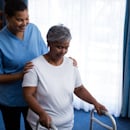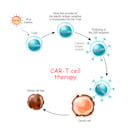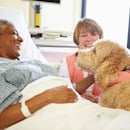
The Need for Z’s: Obstructive Sleep Apnea
The term Sleep Apnea is derived from the Greek word apnea meaning “want of breath.” Today it is estimated that sleep apnea affects up to 18 million Americans -- 10 million of which are undiagnosed. Depending on the severity of the disorder, people with mild to moderate sleep apnea can stop breathing between five and 30 times per hour each night; even higher, in cases of severe sleep apnea (ResMed.com, 2013).
How sleep apnea can affect your health
In adults, sleep apnea has been linked to diabetes, heart failure, hypertension, heart attack and stroke. Up to 50% of those with sleep apnea also suffer from high blood pressure. Sleep apnea in children has been linked to ADHD or attention-deficit/hyperactivity disorder. Some studies suggest it may be genetically inherited, with certain ethnicities at increased risk for developing the disorder. Those who suffer from sleep apnea can fall asleep unexpectedly during the day, and are three times more likely to be involved in motor vehicle accidents (AARC, n.d.).
Obstructive sleep apnea (OSA) is a specific form of sleep apnea characterized by intermittent obstruction of the upper airway during sleep. Periods of breathing cessation may last more than 10 seconds and are associated with recurrent oxyhemoglobin desaturations and arousals from sleep. Often a spouse or other family member is the first to notice signs of sleep apnea in someone with the condition.
Signs of sleep apnea
The Joint Commission (2015) has received 61 sentinel event reports in which a patient was diagnosed with or suspected of having OSA, citing the following concerns:
- Lack of training for health care professionals to screen for and recognize OSA
Failure to assess patients for OSA - Lack of guidelines for the care and treatment of individuals at risk for, and those diagnosed with, OSA
Failure to implement appropriate monitoring of patients with risk factors associated with OSA - Lack of communication among health care providers regarding patients with OSA or potential risk factors associated with OSA
- Lack of postoperative evaluation and treatment for OSA
Screen and Identify
Use of screening tools prior to patients undergoing surgical procedures would minimize the number of undiagnosed patients. If a patient is identified as high risk for OSA, they should receive additional care and therapy post-operatively to avoid potential complications.
Plan of Care
- In planning and reviewing your patient’s plan of care, make certain that precautions are taken to avoid preventable complications. Aspects to consider include:
- Assessing the use of sedating medications and narcotics
- Continuous pulse oximetry monitoring of the patient in an observed environment
- Use of supplemental oxygen or positive airway pressure device
- Patient positioning (TJC, 2015).
Guidelines for Anesthesia Use
The American Academy of Pediatrics (AAP) revised guidelines for managing and monitoring sedation. These guidelines include thorough and careful prescreening for underlying medical or surgical conditions, including OSA.
In 2006, the American Society of Anesthesiologists Task Force on Perioperative Management published its recommendations. Designed to assist the practitioner and patient in making informed decisions about the use of anesthesia, the importance of continuous observation is emphasized.
For more on the respiratory system, check out “Pulmonary Anatomy & Physiology” from the RN.com Assessment Series.
References:
- American Association of Respiratory Care [AARC]. (n.d.). Sleep Apnea Facts. Retrieved from here.
- Gross, J. B., Bachenberg, K. L., Benumof, J. L., Caplan, R. A., Connis, R. T., Cote, C. J., ... & American Society of Anesthesiologists Task Force on Perioperative Management. (2006). Practice guidelines for the perioperative management of patients with obstructive sleep apnea: a report by the American Society of Anesthesiologists Task Force on Perioperative Management of patients with obstructive sleep apnea. Anesthesiology, 104(5), 1081.
- ResMed.com. (2013). Sleep Apnea Facts and Figures. Retrieved from here. (PDF)
- Strohl, K.P., (2015). Overview of obstructive sleep apnea in adults. UpToDate, Wolters Kluwer. Retrieved from here.
- The Joint Commission [TJC]. (2015). At risk: Obstructive sleep apnea patients. Quick Safety, (14). Retrieved from here. (PDF)
© 2015. AMN Healthcare, Inc. All Rights Reserved.
Biography:
Lindsey Ryan is a course author for RN.com. Her clinical experience ranges from Acute to Critical Care where she has functioned in the roles of frontline staff and CNS. Lindsey graduated from Point Loma Nazarene University in San Diego, California with both her BSN and MSN. Most recently she has been responsible for leading efforts associated with new knowledge and innovation including interdisciplinary quality initiatives, evidence-based practice projects and clinical research. Lindsey identifies areas for development, leads evidence-based implementation efforts and performs evaluations to ensure positive patient outcomes.




